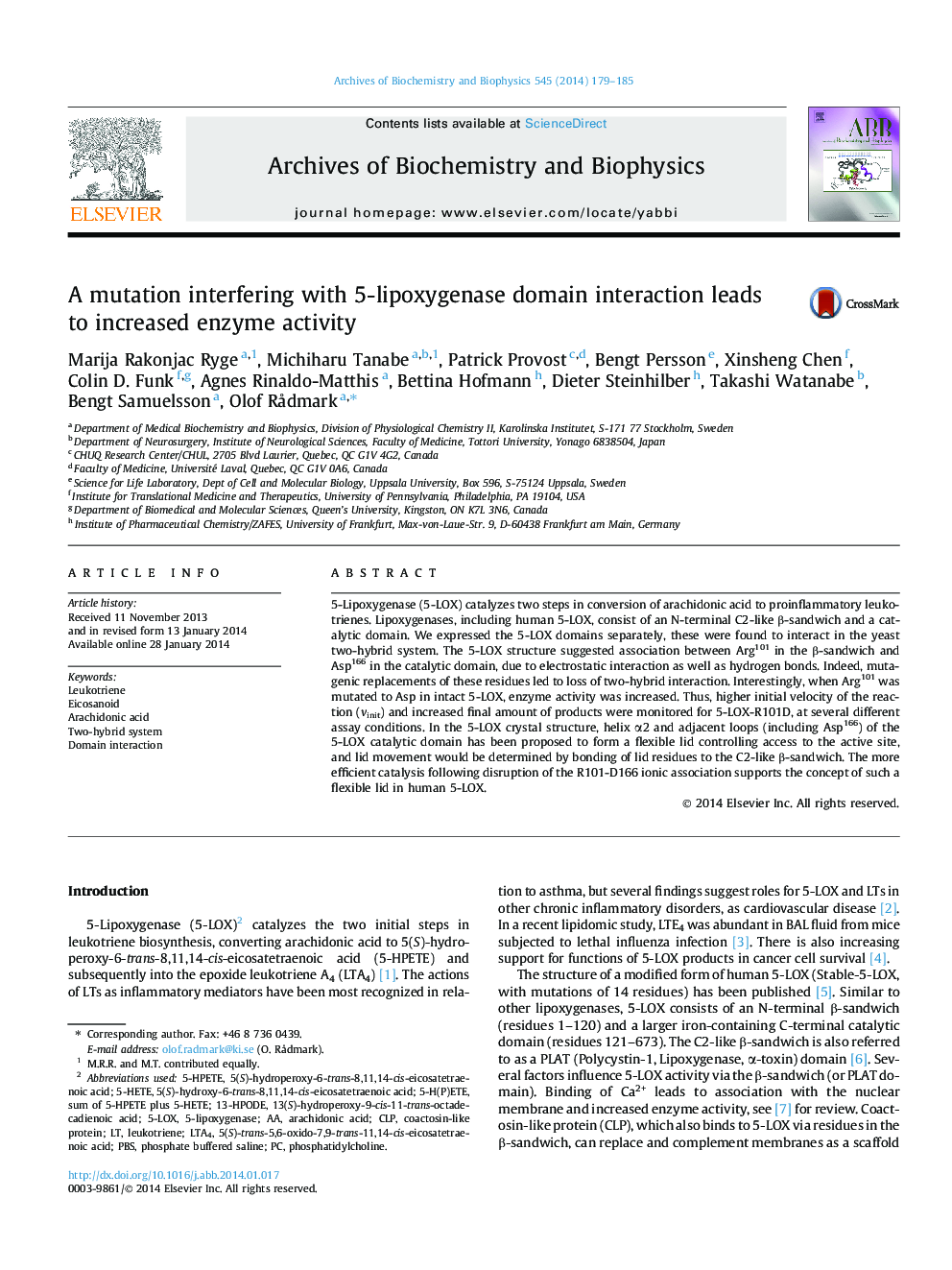| Article ID | Journal | Published Year | Pages | File Type |
|---|---|---|---|---|
| 1925266 | Archives of Biochemistry and Biophysics | 2014 | 7 Pages |
•Human 5-lipoxygenase (5-LOX), catalysing leukotriene biosynthesis, has two domains.•Domain interaction depended on Arg101 (C2-like domain) and Asp166 (catalytic domain).•In the catalytic domain, a proposed flexible lid may control access to active site.•Disruption of bond Arg101 to Asp166 (in proposed lid) gave increased enzyme activity.•The results support a flexible lid, controlled by domain interaction, also in 5-LOX.
5-Lipoxygenase (5-LOX) catalyzes two steps in conversion of arachidonic acid to proinflammatory leukotrienes. Lipoxygenases, including human 5-LOX, consist of an N-terminal C2-like β-sandwich and a catalytic domain. We expressed the 5-LOX domains separately, these were found to interact in the yeast two-hybrid system. The 5-LOX structure suggested association between Arg101 in the β-sandwich and Asp166 in the catalytic domain, due to electrostatic interaction as well as hydrogen bonds. Indeed, mutagenic replacements of these residues led to loss of two-hybrid interaction. Interestingly, when Arg101 was mutated to Asp in intact 5-LOX, enzyme activity was increased. Thus, higher initial velocity of the reaction (vinit) and increased final amount of products were monitored for 5-LOX-R101D, at several different assay conditions. In the 5-LOX crystal structure, helix α2 and adjacent loops (including Asp166) of the 5-LOX catalytic domain has been proposed to form a flexible lid controlling access to the active site, and lid movement would be determined by bonding of lid residues to the C2-like β-sandwich. The more efficient catalysis following disruption of the R101-D166 ionic association supports the concept of such a flexible lid in human 5-LOX.
